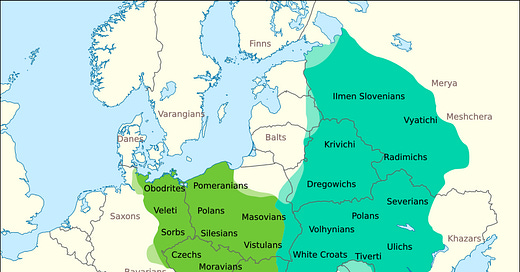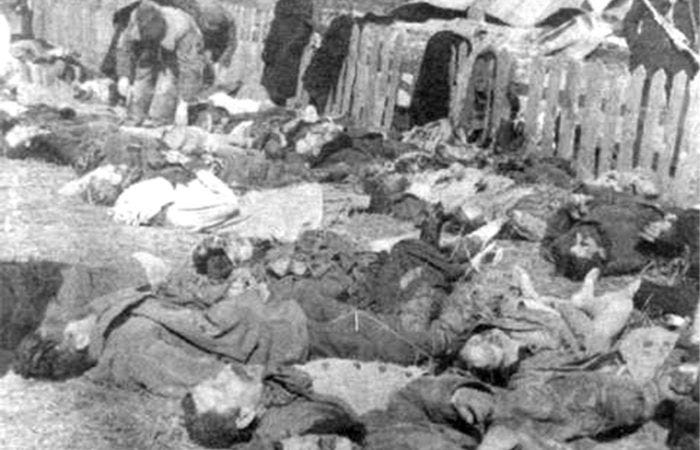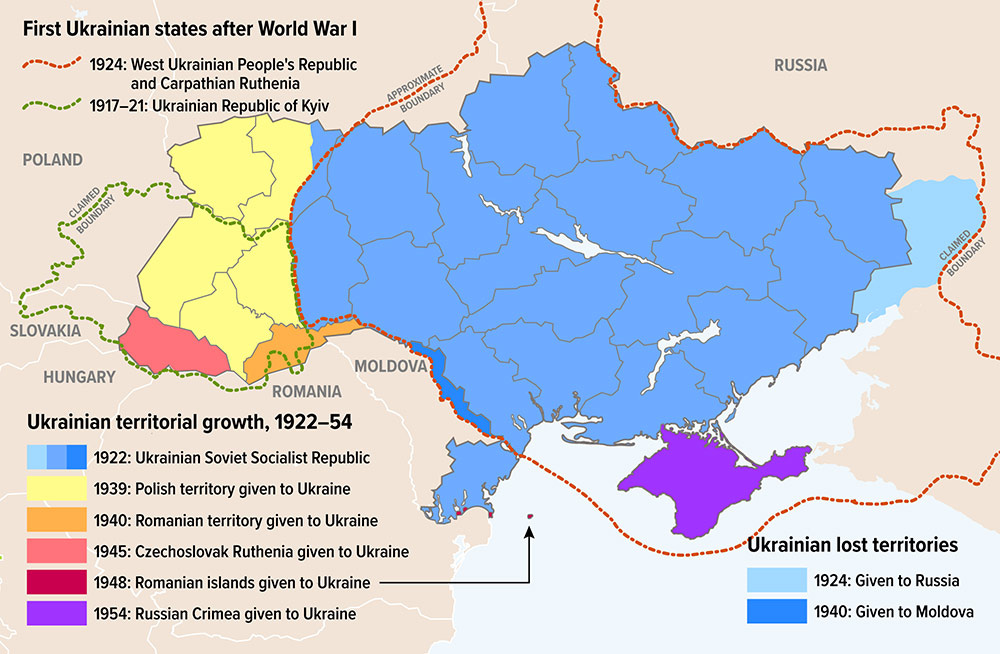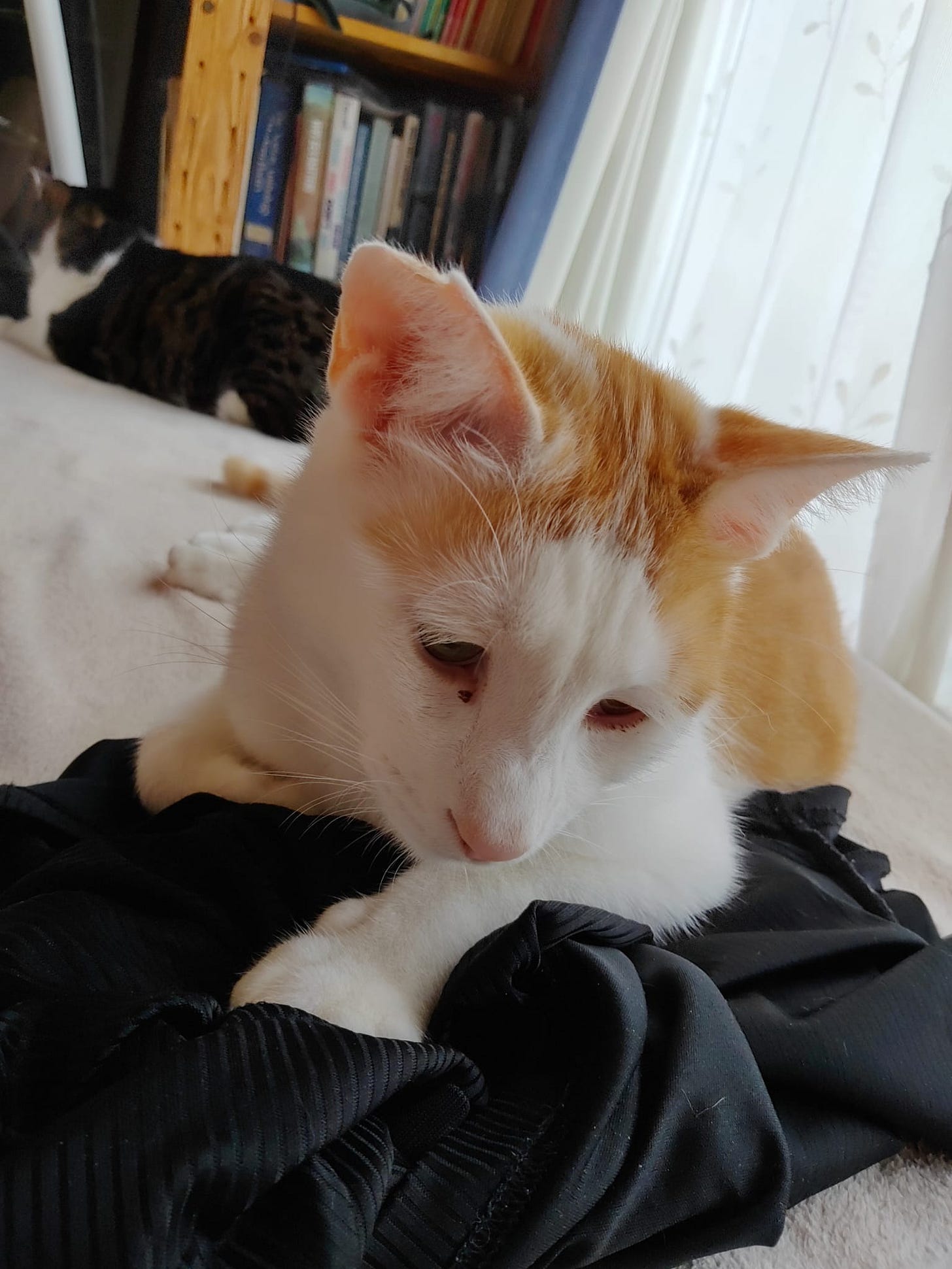One of my coffeebuyers wrote me:
Julian, today you said "One thing is clear: Ukrainians and Russians have very close ties and historical connection, more so that most Russian republics. They are less different than Californians and New Yorkers."
While you have mentioned this before, could you elaborate on this in a separate post? It's a cultural and historical perspective that most Americans, including some of my friends, need to hear.
He’s right. And I am thankful for this.
One Family?
Are the Russians and Ukrainians one people? Many are misinterpreting Putin's recent remark, which if you understand the historical context, as well as the Slavic world, is highly nuanced.
Putin has made clear that he thinks Russians and Ukrainians are one people in the sense that Russia and Ukraine are fraternal cultures – their peoples genetically and historically related, as in fact all Slavs are.
Of course, the map above goes back to the 9th Century! A lot has changed in the meantime. Still, some things haven’t changed at all.
How to explain…. I will try to make it simple.
Suppose you have, from a big family with a lot of brothers and sisters. Maybe it's even a blended family – so some of the siblings are step brothers and sisters.
Still, you're all one family. You are all related. You have a lot of things in common. That doesn’t mean you all get along. Sometimes you don’t even like someone. But you are still “family”.
That means your relationships with your brothers and sisters and parents is different from that with other people, outside the family.
Russians and Ukrainians are in some sense family and also live together since they share borders.
Add to that much of Ukraine is Russian speaking.
That means that 2014 was a family feud.
Crimea? “Mine!” say the Ukies. “Mine!” say the Russkies. The Crimeans, of course, know who Crimea really belongs to.
Both Russians and Ukrainians have an identical parent – the Kievan Russ— who had a lot kids.
Of course, we are talking about “European" Russians who live in the west of the Federation, and not other Russians, in the East and South of the RF, who live in separate ethnic states such as Chechyna, for example.
Russian and Ukrainian are very similar languages- to the extent that a Russian who does not speak Ukrainian will still understand 60% of what is spoken. Mind you, in the case of Ukrainian there are many dialects, despite Kiev’s attempts to impose the Kieve dialect as “standard” Ukrainian. .
Both Russian and Ukrainian are a lot more than just grammar and vocabulary…LOL. There are important cultural elements.
Which is why they both sound rude to people in the West.
When I studied linguistics in the 60s, there were about 50 mutually unintelligible dialects in the British Isles and even today the speaker of British Received Pronunciation, the official “standard” — about 3% of the population will only understand about 50% of “Border English”, spoken on the Scottish-British border, which, by the way, also sounds “rude”.
Most Ukrainians speak Russian since the entirety of Ukraine, except for Galicia / Ruthenia , was once part of the Russian Empire and later the Soviet Union– and also because the area that we call Ukraine or "the Ukraine" always included a lot of different ethnicities— Jews, Greeks, Romanians, Moldovans, Tartars, Belarussians, Lithuanians and others. Russian was the Lingua Franca.
Zelensky speaks Russian . His Ukrainian is said to be “awkward”. I guess my French is better.
Despite Kiev's recent persecution of the Russian Orthodox faith, most Ukrainians are also Orthodox Christians .
So, why do Ukrainians hate Russians?
Do they really?
If you read the MSM, you might think so because Kiev’s propaganda simplifies things. One Ukrainian people in lock step. All hating Russia.
However, a lot of Ukrainians have lived and worked in Russia and even married Russians. Some go West. A lot nowadays go East because that is where the money is.
Hatred for Russians is not a “Ukrainian” thing – it is a Galician / Ruthenian thing, which means a Nazi thing.
Keep in mind that there was no Ukrainian state that endured longer than a historical blink of the eye until 1991. Even in WWII Bandera’s killing fields were under German control.
Keep in mind, however, that modern national states are a rather new thing, historically speaking — invented after the Industrial Revolution. Germany and Italy – and Canada only became national states in the latter half of the 19th Century.
Nations come into being for all sorts of reasons. Some of them good, some of them bad. Almost never for freedom or democracy.
“Ukrainian” nationalism was in fact Galician / Ruthenian, which was much Polish as it was “Ukrainian”. To this day, half of Galicia is in Ukraine – and the other half in Poland.
The Galicians were historically serfs ruled by Polish overlords who used Jews to manage their estates. That accounts for “Ukrainian hatred of Jews and Poles which led to genocides during WWII.
WWI, the dissolution of the Austro Hungarian Empire, the rise of Poland, and the Allied War on “Red” Russia created chaos in the region – and fomented nationalism and ultranationalism.
One moment Galicia was independent; then it was not. The Poles , the French, and of course the Russians, all fought to secure parts of what we today call “Ukraine”, especially Kiev and Odessa. Everyone wanted to control the Dnieper.
The Galicians on the Russian side of the border had always been poor peasants and had few resources. They sought to expand eastwards into other areas. Since most of the resources were – and still are-- in Russian Ukraine they pushed their version of Ukrainian statehood to take control.
Ironically, they got a lot of help from Stalin.
The USSR was created as a federation of semi-autonomous republics, which technically could secede any time they wanted. That was Stalin’s idea. Likewise his “indigenization” program.
The Bolsheviks took steps to appease, and at the same time to penetrate, the non-Russian nationalities.
In 1923 a policy of “indigenization” was announced, including the promotion of native languages in education and publishing, at the workplace, and in government; the fostering of national cultures; and the recruitment of cadres from the indigenous populations. In Ukraine this program inaugurated a decade of rapid Ukrainization and cultural efflorescence.
Within the CP(B)U itself, the proportion of Ukrainians in the rank-and-file membership exceeded 50 percent by the late 1920s. Enrollments in Ukrainian-language schools and the publication of Ukrainian books increased dramatically. Lively debates developed about the course of Ukrainian literature, in which the writer Mykola Khvylovy employed the slogan “Away from Moscow!” and urged a cultural orientation toward Europe. An important factor in the national revival, despite antireligious propaganda and harassment, was the Ukrainian Autocephalous Orthodox Church, which had gained a wide following among the Ukrainian intelligentsia and peasantry since its formation in 1921. Ukrainization was vigorously promoted by the “national communists,” including such Ukrainian Bolsheviks as Skrypnyk and Khvylovy, and especially by the former Borotbists, most prominently the people’s commissar of education, Oleksander Shumsky,
Complicated right?
Boiled down simply: it was the Soviets who created the concept of “Ukraine” as we understand it today.
Of course, Stalin had to put the breaks on Ukrainian communism and its somewhat Trotsky-ite cultural orientation toward Europe. The USSR was under threat by the West and need to industrialize fast and to reform the economic system, which in Ukraine was similar to much of Russia, favoring landownership by the gentry, including the now famous “kulaks”.
These reforms unfortunately coincided with the region’s periodic famines, which historically occurred every decade or so with thousands, if not millions dying. One occurred in the early 1920s.
Western propaganda blames Soviet policies - -but, in fact, the effects of these famines would have been far worse, if the Kulaks had been permitted to hoard grain to increase their profits as they were used to doing. Of course, stamping down on such profiteering also interfered with supply chains.
The next famine came right on schedule — 1932 – 1933 — and has been politicized as the “Holodomor” – an attempt by Western propagandists, the Poles, and the Nazis to deflect and accuse the Soviets of genocide, to destroy the Ukraine, which they had invested such effort in trying to build up.
The Western consensus is now that this famine was “man-made” – not cyclical despite the evidence that it was and that it was “planned” even though the Soviets made great efforts to mitigate the effects, preventing what would have been a much larger death toll—as I explain in detail in my Special Article for coffeebuyers (Putin 3),
If you look at the map, you can see that the yellow parts are Galician (Ruthenian) Ukraine. Russian-speaking Ukraine includes Kiev and the areas east of the Dniepr, the Donbass, Lugansk, Zaporozhye, and everything south including the Black Sea Coast. Who are the people in the blue parts of Ukraine? Western propaganda tells you they are all NeoNazis who hate Russians, except for large numbers who want to join the Russian Federation voted to join them and fight Kiev.
During WWII, the Galicians supported the Nazis, who gave them carte blanche to slaughter Poles and Jews, although many Nazis, even the SS, found their ferocity and bloodlust horrifying.
At the end of WWII, most of the Ukrainian Nazis went West to Canada, the US, the UK, and Argentina and their descendants rose high in government. Christina Freeland in Canada is one of those. And the current British head of MI6 is her another: her grandfather was Constantine Dobrowolski was known as the “Butcher”.
The CIA was formed with help from ex-Nazis at the end of WWII and it set about supporting Ukrainian separatism. A kinder, gentler SS.
So it was that the 2014 coup did not just happen – it was the culmination of many years of subversion supported and managed by the CIA and MI6. It was supposed to be one of a “Final Solution” -the cultural genocide of ethnic Russians and Russian speakers in Ukraine.
Of course, “Ukraine” (no longer called “the Ukraine” was set up as a proxy, to torpedo the fast-growing, new Russian state which had taken over from the USSR . First Ukraine, then Russia.
Then came 11 years of propaganda, brainwashing, teaching children to hate.
Even so most Ukrainians under Kiev’s control are not Banderites, even though they know to keep their opinions to themselves – or ,as is more convenient, to have no opinions at all.
And…
… after all is said and done, Eastern and Southern Ukraine are pro-Russian.
When Kiev falls and Russia, as Trump puts it, offers them a better “deal”, most of hte oblasts will vote for a better future, rather than to be part of a fictitious nation run by a President who plays the piano with his penis and a lot of guys with prison and neo-Nazi tattoos.
At present, at least six or 7, perhaps 8 oblasts will vote to join Russia. Galicia / Ruthenia can go back to Poland – the Russians don’t want it.
I am constantly supervised.
Previous Articles
Here are some previous articles relevant to this one.
Civilization vs Empire
The Americans are said to be thinking of proposing a partition of Ukraine into two, with a kind of DMZ. They like this kind of thing and have tried it in the past with the Koreas, Vietnam, and so on. It never ends well.
Neverending War
Dmitri Kovalevich , a Ukrainian analyst has written an excellent piece for Al Mayadeen, which should be on everyone’s reading list.
Nazi Is As Nazi Does
Putin offered a 30 hour ceasefire for Easter. Zelensky first refused – then accepted, since it was “bad optics’ not to do the decent thing .












Thank you for this very detailed but good readable overview of the Slavic relations in and around Ukraine.
And for other readers, don't forget to read the additional articles at the end.
Cassandra
https://archive.ph/d3Vzl
Article by Vladimir Putin ”On the Historical Unity of Russians and Ukrainians“ - 2021. An extremely well written piece. Of course the extra detail about the Nazis is always a good reason to mock Canada's Chrystia Freeland.